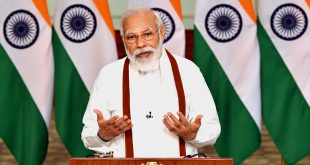The inaugural Hero Indian Super League (ISL) completed its first season on December 20th. Its debut campaign was the subject of much hype, millions of pounds of investment and a host of famous names associated with it, both on and off the pitch.
SBC has covered the ISL in detail, including the build up, the seeming potential, the excitement and the teething problems. This is the concluding chapter of the SBC ISL story, and analyses how the first season went, who was watching, the performances of teams, ‘star players’, and how things are looking for the next season.
How it all ended
Atletico de Kolkata were the eventual victors (pictured) as they beat Kerala Blasters 1-0 in a tense finale. After a league competition in which each team played fourteen times, the top four; Kerala, Goa, Kolkata and Chennaiyan proceeded to participate in the knockout stages.
Chennaiyan’s Brazilian star Elano had a fantastic campaign and finished proceedings as top scorer with 8 goals, Sergio Contreras Pardo and Miroslav Slepicka both secured four assists whilst Goa’s Jan Seda took a very respectable 7 clean sheets.
Of the other foreign marquee players drafted in, the most high profile, Alessandro Del Piero, was actually somewhat of a disappointment on the pitch. Only one goal in ten appearances, and more time than was expected sitting on the bench despite the Italian turning 40 in November, whilst he was a worthy ambassador for the league – his performances simply weren’t good enough.
Pires was better but far from the star of FC Goa; he set up goals and was creative, but age is against him and it was clear that the 41 year old legend was unable to keep up with the speed and fitness of those around him. Player-coach of Kerala Blasters, David James, was the oldest player in the league at 44 years old and was pivotal in the success of his side. Kolkata’s Luis Garcia was an important presence in midfield, and a major reason they were crowned champions.
Popularity
Cricket has long reigned supreme on the Indian sports scene, and long will that continue but the extent of the support for the ISL may have surprised a few. The Times of India reported that there were 429 million television viewers, making it the nation’s second most popular sport.
What is more is that its popularity actually grew throughout the tournament; the final was watched by over 57 million. The excitement and glamour surrounding the opening ceremony was matched by consistently high match attendance figures, in addition to the TV viewers. Another notable statistic is the diversity of the fan base; with women and children accounting for 57% of the 429 million viewers.
In terms of actual match attendance, the opening game between Kolkata and Mumbai City drew 65,000 spectators, whilst 57,000 attended the Kerala Blasters v Kolkata match. Overall the league attracted over one million live fans, and was behind only the Premiership, La Liga, and the Bundesliga worldwide in terms of average attendance.
The league’s organisers and promoters also invested heavily in social media coverage with an impressive site boasting regularly updated, and high quality, digital content and statistics. This too paid off; #ISLfinal trended at #2 worldwide on December 20th, whilst winners Atletico Kolkata trended at #1 on Facebook in India. Furthermore the ISL created 2.2 million social media conversations, consisting of 275,000 individual authors. Significantly, this figure was twice the number generated by the 2014 Fifa World Cup in the country.
The Future
The dates for the second ISL competition have now been confirmed. It will take place between September 15th and December 15th this year. The All India Football Federation Secretary, Kushal Das, also added that: “there won’t be a draft system”, and that “there could be brand new teams”.
 Das also noted how the league had raised the standard of play for the sport in India, and improved its infrastructure too. The secretary explained how “there would be positives for the I-League, too.” The I-League is India’s other, longer running, but less prestigious, footballing competition. This kicked off on January 17th, which gives it the immediate disadvantage of being played during the hot summer months; with temperatures uncomfortable for players and fans alike. Attendances were typically lower than those attained by its new glitzy sibling, and the lack of famous names is arguably another issue.
Das also noted how the league had raised the standard of play for the sport in India, and improved its infrastructure too. The secretary explained how “there would be positives for the I-League, too.” The I-League is India’s other, longer running, but less prestigious, footballing competition. This kicked off on January 17th, which gives it the immediate disadvantage of being played during the hot summer months; with temperatures uncomfortable for players and fans alike. Attendances were typically lower than those attained by its new glitzy sibling, and the lack of famous names is arguably another issue.
What it does have though is a platform for young Indian talent to develop, and its timing could in fact prove to be ideal. Football is enjoying immense popularity post-ISL, and the I-League does feature some fierce and well supported derbies; the likes of which were not on offer in the ISL, such as the Mohan Bagan v East Bengal game (pictured).
Academies and investment…
As for further development of younger would-be stars; there is hope. Just two days after winning the league Atletico de Kolkata announced that the club would be setting up an academy in West Bengal in the near future.
A continuing stream of investment is of course vital to aid further development, and sustain widespread interest. On this note; Jerome Champagne, a Fifa presidential candidate, voiced his opinion in early January.
Champagne stated: “I follow the Premier League, but at the same time I would like them to give something back. They make $40m (£26m) from Indian TV rights, so why not hand back a little chunk to the Indian league? That’s about solidarity, that’s about justice, that’s about fairness.”
The ISL is already well funded with backers including the likes of Sachin Tendulkar amongst many others, but the sport at a wider level nationwide needs investors. It seems doubtless that with the impact that the short, initial league campaign has had, that this investment will be found.
 The development of home-grown talent will continue to be an integral aim in the 2015 competition. Moreover the league needs to provide these players with a worthy platform on which to showcase their talent to the world. Luis Garcia said of this: “We have always said that this league is not about the marquee players. It’s about Indians. Just look at the final how Rafique scored the winning goal. The potential (for Indian players) is no doubt enormous.”
The development of home-grown talent will continue to be an integral aim in the 2015 competition. Moreover the league needs to provide these players with a worthy platform on which to showcase their talent to the world. Luis Garcia said of this: “We have always said that this league is not about the marquee players. It’s about Indians. Just look at the final how Rafique scored the winning goal. The potential (for Indian players) is no doubt enormous.”
Indeed it has already created opportunities for players that were previously not on offer. The likes of Bikramjit Singh and Romeo Fernandes, both 22 year old midfielders for Goa, are investigating options abroad, with Brazilian side Atletico Paranaense reportedly set to offer Fernandes a contract.
Young defender Sandesh Jhingan (pictured), of Kerala Blasters, is another whose destiny must lie abroad. A fantastic set of performances helped his side secure six clean sheets, and the defender has been named one of the ISL’s most promising Indian stars.
Jhingan expressed the importance of the ISL, and the guidance of foreign players, in his development: “On and off the field, I am learning so much. Players like Humey (Iain Hume) and (Stephen) Pearson – I am soaking so much from them and it is going to stick with me for the rest of my life. This is how the ISL is helping me.”
Article Sources
- http://www.thehindubusinessline.com/news/sports/indian-super-league-kolkata-celebrates-win/article6712761.ece
- http://timesofindia.indiatimes.com/sports/football/indian-super-league/top-stories/Indian-Super-League-was-watched-by-429-million-on-TV-according-to-TAM-data/articleshow/45692508.cms
- http://timesofindia.indiatimes.com/sports/football/indian-super-league/top-stories/ISL-hits-1-million-in-stadia-fans/articleshow/45298645.cms
- http://sports.ndtv.com/indian-super-league-2014/news/234887-indian-super-league-s-2015-edition-to-be-played-between-september-december-aiff
- http://ibnlive.in.com/news/indian-super-league-is-here-to-stay-but-what-about-the-ileague/517540-5-21.html
- http://www.goal.com/en-india/news/136/india/2015/01/06/7700502/champagne-wants-the-premier-league-to-invest-in-indian
- http://www.kolkatafootball.com/ileague_2012-13/tournament.html










